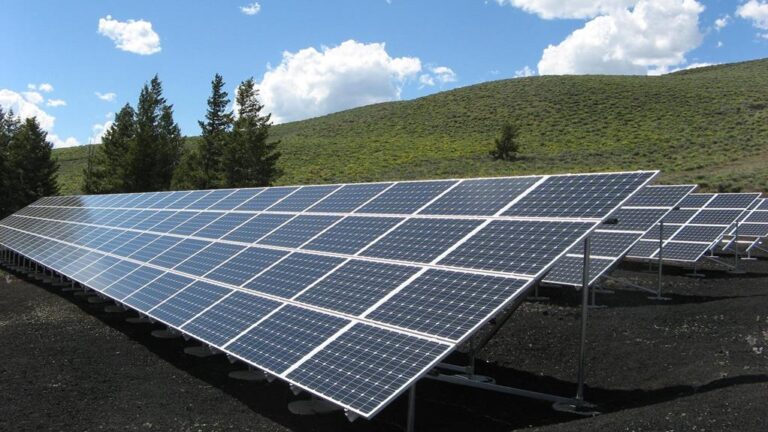New Developments in Green Energy Policies and Regulations
Are you curious about the latest advancements in green energy policies and regulations? Well, we’ve got some exciting news for you!
There have been significant developments in this field that aim to create a more sustainable future for all of us. From international agreements like the United Nations Paris Agreement to national initiatives like the Energy Independence and Security Act of 2007, governments are taking action to promote clean energy adoption and combat climate change.
On top of that, there are various incentives and funding opportunities available to support the transition to renewable energy sources.
So, if you’re looking to be a part of the green energy movement, stay tuned for all the latest updates on policies and regulations that are shaping our future.
International Efforts for Sustainable Energy
Our international collaborations, such as those under the United Nations Paris Agreement and the International Energy Agency, have played a crucial role in advancing our efforts for sustainable energy. These collaborations have led to the development and implementation of various policies and incentives at the state and local levels to promote renewable energy projects and improve energy efficiency.
One such policy is the adoption of renewable portfolio standards (RPS), which require states to generate a certain percentage of their electricity from renewable sources. These standards have been instrumental in driving the growth of renewable energy and reducing greenhouse gas emissions.
Additionally, state incentives for renewables, such as tax credits and grants, have encouraged the deployment of clean energy technologies. By focusing on state and local policies, we can create a more sustainable future by harnessing the potential of renewable energy and improving energy efficiency.
Advancements in Renewable Energy Technologies
We are witnessing a rapid evolution in renewable energy technologies, with advancements in solar power, wind energy, hydropower, geothermal energy, and biomass. These advancements are driving the transition towards clean energy and have the potential to revolutionize the way we generate and consume electricity.
Solar power is becoming more efficient and affordable, with new technologies like thin-film solar cells and solar panels with integrated energy storage. Wind turbines are becoming larger and more efficient, harnessing more power from the wind. Hydropower is being modernized with the development of innovative turbine designs and the utilization of tidal and wave energy.
Geothermal energy is being tapped into through enhanced geothermal systems, which can provide a stable and reliable source of clean energy. Biomass technologies are also advancing, with the development of more efficient conversion processes and the use of agricultural waste as a feedstock.
These advancements in renewable energy technologies have the potential to transform our energy landscape and contribute to a more sustainable future. To support these advancements, energy policies and regulations need to be updated to incentivize the deployment of utility-scale renewable energy projects and encourage energy efficiency measures at the local level.
Federal incentives can play a crucial role in driving innovation and investment in clean energy technologies, while local governments can implement policies that promote the adoption of renewable energy systems and incentivize energy-efficient practices. By embracing these advancements and implementing supportive policies, we can accelerate the transition to a clean energy future.
Government Incentives and Funding Opportunities
Government agencies offer a range of financial incentives and funding opportunities to support the development and deployment of green energy projects. These incentives and funding opportunities aim to encourage the transition to renewable energy sources such as solar power. Here are some examples:
- Office of Energy Efficiency and Renewable Energy (EERE): The EERE provides grants and funding for research, development, and deployment of clean energy technologies.
- State Renewable Portfolio Standards (RPS): Many states have established RPS, which require utilities to obtain a certain percentage of their energy from renewable sources. This creates a market demand for renewable energy and incentivizes its development.
- Environmental Protection Agency (EPA) and Department of Energy (DOE): These agencies offer grants and funding for energy efficiency programs, renewable energy projects, and clean energy innovation.
These incentives and funding opportunities are crucial in driving the growth of the green energy sector in the United States, aligning with President Biden’s commitment to addressing climate change and promoting sustainable energy policies and programs.
Updates in Carbon Pricing and Emission Reduction Targets
As stakeholders in the green energy sector, it’s important for us to explore the latest updates in carbon pricing and emission reduction targets. Recent developments in green energy policies and regulations have focused on these key areas to address the urgent need to combat climate change.
One notable development is the establishment of the Clean Energy Technology Center, which aims to promote the adoption of clean energy technologies and support the implementation of carbon pricing mechanisms. Carbon pricing is a policy tool that puts a price on greenhouse gas emissions, encouraging companies to reduce their emissions and invest in cleaner technologies.
Additionally, governments have been setting more ambitious emission reduction targets, such as the goal of reducing climate pollution by 40% below 2005 levels by 2030. These targets provide a clear roadmap for action and demonstrate a commitment to addressing the challenges of climate change.
To incentivize emission reductions, the use of Renewable Energy Certificates has become more prevalent, allowing organizations to support renewable energy projects and offset their emissions.
These new developments in carbon pricing and emission reduction targets are crucial steps towards a greener, more sustainable future.
Emerging Trends in Green Energy Policy Implementation
One key trend in green energy policy implementation is the increasing adoption of energy efficiency measures. As governments and organizations recognize the importance of reducing energy consumption, they’re implementing programs and initiatives aimed at improving energy efficiency in various sectors. This trend is driven by the desire to minimize greenhouse gas emissions, lower energy costs, and promote sustainable development.
- New Portfolio Programs: State and local governments are launching new portfolio programs that incentivize the adoption of energy efficiency and renewable energy technologies. These programs provide financial assistance, grants, and tax credits to encourage businesses and individuals to invest in energy-efficient solutions.
- Renewable Electricity: The focus on renewable electricity is growing, with policies and regulations promoting the expansion of solar energy and other renewable sources. Governments are setting targets for increasing the share of renewable energy in their electricity mix, driving the development of solar projects and creating opportunities for the solar industry.
- Federal Government Initiatives: The federal government is taking a proactive role in promoting energy efficiency and climate action. Through funding initiatives and tax credits, they’re encouraging the adoption of energy-efficient technologies and supporting the growth of renewable energy.
These emerging trends in green energy policy implementation demonstrate a collective effort to create a sustainable and resilient future. By prioritizing energy efficiency and renewable energy, governments and organizations are taking steps towards a cleaner and greener world.
Conclusion
The new developments in green energy policies and regulations have led to significant progress in promoting sustainable energy practices.
One interesting statistic is that the United Nations Paris Agreement has been ratified by 189 out of 197 countries, demonstrating widespread global commitment to addressing climate change.
This visual representation highlights the importance of international cooperation in achieving a cleaner and more sustainable future.






